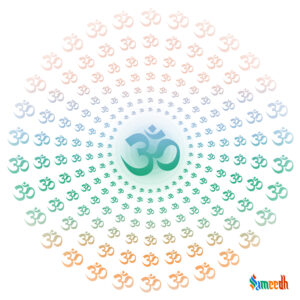Moksh, also known as Mukti or Liberation, is a central concept in Hinduism, representing the ultimate goal of human life. It refers to liberation from the cycle of birth, death, and rebirth (samsara) and the attainment of union with the divine or realization of one’s true nature. Moksh is considered the highest state of spiritual attainment, where an individual transcends the limitations of the material world and experiences eternal bliss, peace, and freedom.

Moksh signifies liberation from the endless cycle of birth, death, and rebirth. It involves breaking free from the cycle of karma (actions) and the bondage of worldly existence. Moksh involves realizing one’s inherent unity with the ultimate reality, often referred to as Brahman or the Supreme Being. It is the merging of the individual soul (Atman) with the universal consciousness.
Moksh is characterized by a state of eternal happiness, peace, and contentment that transcends worldly joys and sorrows. It is the fulfillment of the soul’s deepest longing for unity with the divine. Attaining Moksh brings an end to the cycle of suffering (samsara-duhkha) caused by attachment, desire, and ignorance. It is liberation from the pains of birth, old age, disease, and death.
Moksh involves recognizing and realizing one’s true nature as the immortal, divine Self (Atman), which is beyond the limitations of the physical body, mind, and ego. Attaining Moksh is considered the ultimate purpose of human life in Hinduism. While it may be achieved through various spiritual practices and paths, the sincere pursuit of self-realization, righteousness, and devotion to the divine are considered essential for realizing the state of Moksh.
Four paths to Moksh
In Hindu philosophy, there are traditionally four paths, known as “Yogas,” that lead to Moksha, which is liberation from the cycle of birth and death (samsara) and union with the divine. These paths are not mutually exclusive, and individuals may follow a combination of them based on their inclinations and spiritual progress. The four paths to Moksh are:
- Karma Yoga (Path of Action):
- Karma Yoga emphasizes selfless action and the performance of duties without attachment to the results.
- Practitioners of Karma Yoga dedicate their actions to the divine and perform them as a service to humanity.
- By performing actions with a sense of duty and detachment, individuals purify their minds and cultivate spiritual growth, ultimately leading to liberation.
- Bhakti Yoga (Path of Devotion):
- Bhakti Yoga centers around devotion, love, and surrender to a chosen deity or the Supreme Being (Ishvar).
- Practitioners of Bhakti Yoga engage in devotional practices such as prayer, worship, chanting, and singing bhajans (devotional songs) to deepen their connection with the divine.
- Through unwavering devotion and surrender, individuals dissolve their ego and merge with the divine, attaining liberation.
- Jnana Yoga (Path of Knowledge):
- Jnana Yoga emphasizes the pursuit of self-knowledge, wisdom, and realization of the true nature of the self (Atman) and the ultimate reality (Brahman).
- Practitioners of Jnana Yoga engage in rigorous self-inquiry, study of scriptures (such as the Upanishads), contemplation, and philosophical discourse to discern the difference between the eternal self and the transient world.
- By realizing the illusory nature of the ego and the material world, individuals attain enlightenment and liberation from the cycle of birth and death.
- Raja Yoga (Path of Meditation):
- Raja Yoga, also known as Ashtanga Yoga, focuses on meditation, concentration, and control of the mind and senses.
- Practitioners of Raja Yoga follow the eightfold path outlined by Patanjali in the Yoga Sutras, which includes ethical principles (Yamas and Niyamas), physical postures (Asanas), breath control (Pranayama), withdrawal of the senses (Pratyahara), concentration (Dharana), meditation (Dhyana), and absorption (Samadhi).
- Through disciplined practice and mastery of the mind, individuals achieve inner stillness, transcendental consciousness, and union with the divine, leading to liberation.
Each of these paths offers a unique approach to spiritual realization and liberation, catering to different temperaments and spiritual inclinations. Ultimately, the goal of all four paths is to attain Moksh and experience oneness with the divine.
Attaining Moksh requires sincere dedication, self-discipline, and perseverance on the spiritual path. It is a gradual process of purification, transformation, and realization that culminates in the liberation of the soul from the cycle of birth and death, leading to eternal peace and union with the divine.